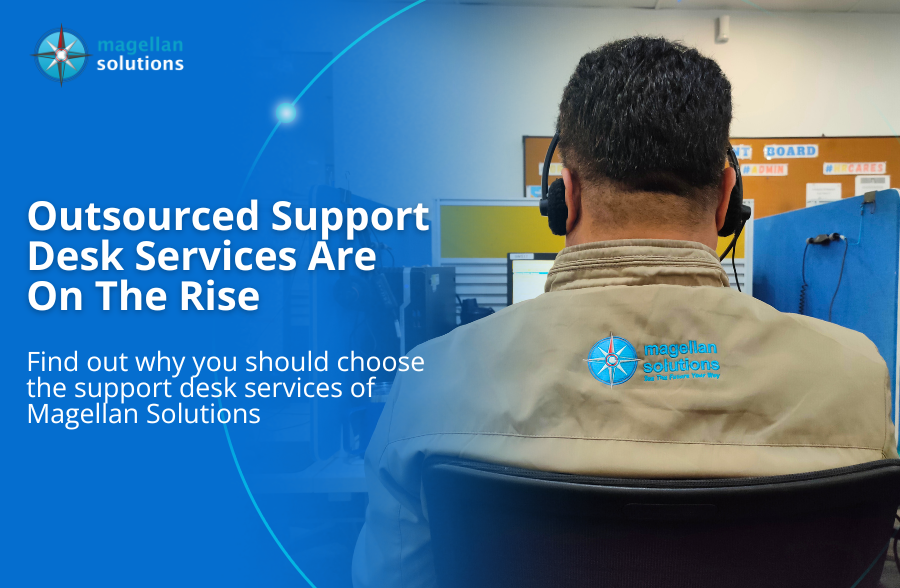Schedule a FREE call with our outsourcing expert now and get a precise quotation that meets your requirements. Don't wait - get started today!
A growing company may face a lot of challenges. As a company expands, its business functions and structures evolve too. Growth challenges may arise, such as delegating tasks in a limited workforce. Overcoming these challenges is essential for any company to thrive in the business. If you think your company is set to grow ahead, it’s time to take proactive measures.
Two possible ways can address your business growth challenges. You can outsource labor to a third party or hire an in-house staff. Both of these strategies can either make or break your business. That’s why it’s essential to have a vast understanding of these two to determine which way to go.
What’s the difference between outsourcing and in-house staffing?
Outsourcing has a simple onboarding process. It only allows you to subcontract a third party to carry out some operational tasks outside your business. Many businesses leverage outsourcing services when they need skills not present within their organization. This is because such expertise is only required to complete short-term projects. In this business practice, you can extract the needed skills without investing in a full-time or part-time hire. Also, one of the advantages of outsourcing is that you can pay on a project-by-project basis with no contracts.
On the other hand, in-house staffing requires you to employ new in-house staff with all the technical skills you want and a personality that efficiently works with your company. It proceeds through a step-by-step process. In this practice, you will reach a pool of candidates through job postings, job referrals, advertisements, and, eventually, hiring the most qualified candidate. With an onsite staff, you must offer a competitive salary, room for growth, and other on-office perks to motivate them for future projects and help the company in different ways.
What are the pros and cons of outsourcing and in-house staffing?
Outsourcing offers a more scalable approach than hiring in-house staff. Many outsource external services to maximize productivity while minimizing fixed overhead costs. This saves on recruitment costs, office equipment budgets, and leasing expenses. Many businesses that opted for this strategy were able to multiply their revenue and cut the incremental increase in their expenditures. However, some challenges of outsourcing may occur in synchronizing deliverables. If you choose the wrong outsourcing partner, your business may suffer from stretched delivery time frames or substandard quality output.
The management process becomes much more simplified with in-house staff on your site. But most of the time, hiring in-house staff to build your dream team can be expensive. Recruitment alone will demand a lot of processes. You will advertise job posts, review resumes, and conduct interviews. Your in-house staff would also expect medical benefits. This will add to your labor burden costs. But you can focus on your in-house resources to generate more profit when you outsource. Experts with well-honed best practices from your outsourcing partner will also handle some tasks for you.
How effective is outsourcing?
Strategic outsourcing usually serves as a stand-by cost-cutting measure. Most businesses tailor their service consumption to their needs by outsourcing. It helps them maintain profits even in the early stage of business. Outsourcing for startups can help them gain cost advantages. They can save up costs on payroll, rentals, and employee benefits while streamlining their operations.
Outsourcing can cut at least 70% of labor costs. Mandated employee benefits are one of the costs that add to payroll expenses. Small firms have learned the hard way to cut these staff benefits. They took the risks of outsourcing to access new skill sets and talents in the market. The result allowed them to work with professionals without the attached recurring benefits. This move has helped them save money in the long term.
Why should I outsource?
Outsourcing enables you to focus on your core activities. Menial tasks can be time-consuming, and troubleshooting IT issues and managing and training staff can leave you exhausted. Outsourcing these business functions can be an excellent choice to reduce your workload.
Taking order calls and answering inquiries, for example, is not challenging, but keeping your business intact is essential. Through outsourcing, you can deploy these mundane tasks to a third party. This enables you to fulfill your critical responsibilities without micromanaging an internal team, and hiring an in-house team can help you delegate tasks to some extent. However, supervising them can interfere with your performing your duties. Unlike choosing to outsource, you don’t need to be in charge of your employees. You also have a choice whether to provide intensive training to your outsourced talent or entrust this task to your outsourcing provider.
Which is better: In-house or outsourced employees?
Hiring in-house staff has its own set of limitations. The chances of hiring the best employee are slim in a small, local talent pool. It limits you from working only with professionals who reside where your business operates. This is challenging if the skills and expertise you need are not available within your reach. This is where the advantages of outsourcing take place. Outsourcing opens your doors to a global pool of professionals. It resolves acute talent shortages and increases the demand for highly skilled professionals.
One of the benefits of outsourcing is working with a remote team in another time zone. This results in faster work completion by utilizing round-the-clock operations. Your in-house staff may not deliver their outputs on time. This is true if you delegate tasks hours before the end of their shift or beyond regular working hours. Having a fixed working schedule can affect your business’ output delivery. This is because your in-house staff works the same hours as you do.
With outsourcing, you can operate with more business hours if you contract labor to a country with a different time zone. You can set up your operations 24/7. Your outsourcing service provider can continue working on your projects while you sleep. This type of arrangement can lead to higher productivity. At the same time, it can impact your business across the board.
Companies that benefited from outsourcing and hiring in-house employees
Some of the most successful companies nowadays have once faced growth challenges. As they grow, so is the demand for a more extensive workforce. Their move to outsource and hire in-house has shown positive outcomes. And no doubt, these are strategies many would like to adopt. You might be thinking about which plans to invest in. Learn how today’s most prominent companies addressed their business growth challenges.
Before it became an e-commerce giant, Alibaba had its humble beginnings. It only started as a small Internet company. It has grown into one of the world’s largest global Internet e-commerce sites. Most people have not heard about the company’s growth challenges despite its undisputed success. As the company progressed, its founder, Jack Ma, sought ways to scale up its workforce. They resorted to outsourcing when web developers were scarce in China. The company started outsourcing its web development abroad. This is because the skills they needed to develop their website were more accessible in the U.S. Working with an outsourcing service provider yielded good results. Alibaba was able to build a sustainable e-commerce infrastructure. In his book, Ma mentioned how outsourcing helped his business to take off. Their various platforms are among the world’s largest and most popular online marketplaces.
Companies with excellent training programs can attract promising talents. Consider Seattle Genetics, a biotechnology company, as an example. This company specializing in cancer treatment topped the list of companies investing in its employees. The biotech firm attributes its success to its desire for in-house expertise. Clay Siegall, the company’s CEO, believes in establishing broader in-house service capabilities. Through onsite training, they can keep their staff and attract potential talents. Their focus on in-house has led them to expand their operations, thus opening more jobs. Building a skilled and stable organization is attainable for most companies investing in long-term employees.
How do I start outsourcing?
The first step towards outsourcing is determining whether you are working on a task or a project. A job is an undertaking with a clearly defined process. One of the best examples of this is responding to customer service calls using pre-developed methods. A project, on the other hand, is an activity that demands thorough development. This would include things like providing architectural design services. When you take on the task of customer support, consider outsourcing to a customer service call center. When it’s a project, outsourcing to a professional team is the perfect solution.
The next step is to develop a straightforward process. You may consider asking yourself what software can help you track leads. You may also consider the optimal time to post on your social media. But if you are just a tiny enterprise, you probably have no idea how to execute it. You don’t have to worry! Your choice of outsourcing partner can save you a lot in this process. There are more processes involved in outsourcing. However, you can skip these if you work with the right service provider. You can leave all your worries to them and focus on your core activities. Note that to attain the maximum benefits of BPO Services, you must choose a professional, reliable outsourcing provider.
















